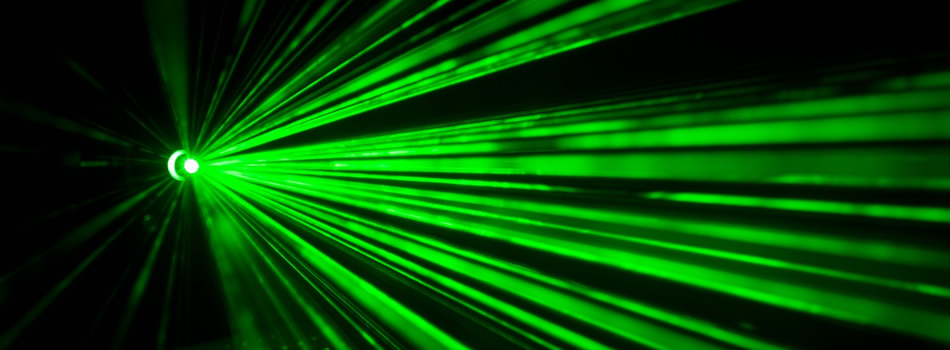Nano Laser Nano Laser (structure of radiation and reflection) based on PhD Nano _ Microelectronics
Researcher and author: Dr. ( Afshin Rashid)
Note: The nano-laser works on scales 1000 times smaller than the thickness of human hair. The lifespan of light captured in such small dimensions is so short that a wave of light only has a few tens or hundreds of times to move up and down. Nano-lasers open up new avenues for coherent light sources on chips such as lasers, which are very small and ultra-fast.
The performance of nanosacres is based on fast conductive nanoparticles such as silver arranged in a periodic array. Unlike conventional lasers, where laser signal feedback is provided by conventional mirrors, nano-lasers use a radiation bond between fast-conducting nanoparticles such as silver. These 100 nm particles act as small antennas. To produce high-intensity laser light, the distance between the particles is matched to the laser wavelength so that all the particles in the array are irradiated in unison. Fluorescent organic molecules are used to supply the input energy (gain) required for the nanocaser.
A major challenge for nano-lasers is the lack of enough light to be useful if not available in small dimensions. The light from the nano-laser does not radiate or re-radiate. To solve the problem of radiation and reflection, nano-lasers are produced in the dark state of leasing. A dark state can be understood directly by considering regular antennas: a single antenna, when guided by one current, radiates strongly, while two antennas - if guided by opposite currents and very close to each other, they have very little exposure to " " a dark state in an array of nanoparticles causes the same phase opponents in each nanoparticle gets, the frequency of visible light. " " the dark for applications that They require low energy consumption and are as attractive as nano-lasers. But without any tricks, the dark laser is completely useless because the light is basically trapped in the array of nanoparticles and can not get out. "But with the small size of the array, an escape path has been found for light, and towards the edges of the array, the nanoparticles begin to reflect more and more like regular antennas that radiate to the outside world."
Conclusion :
The performance of nanosacres is based on fast conductive nanoparticles such as silver arranged in a periodic array. Unlike conventional lasers, where laser signal feedback is provided by conventional mirrors, nano-lasers use a radiation bond between fast-conducting nanoparticles such as silver. These 100 nm particles act as small antennas. To produce high-intensity laser light, the distance between the particles is matched to the laser wavelength so that all the particles in the array are irradiated in unison.
Researcher and author: Dr. ( Afshin Rashid)
PhD in Nano-Microelectronics




